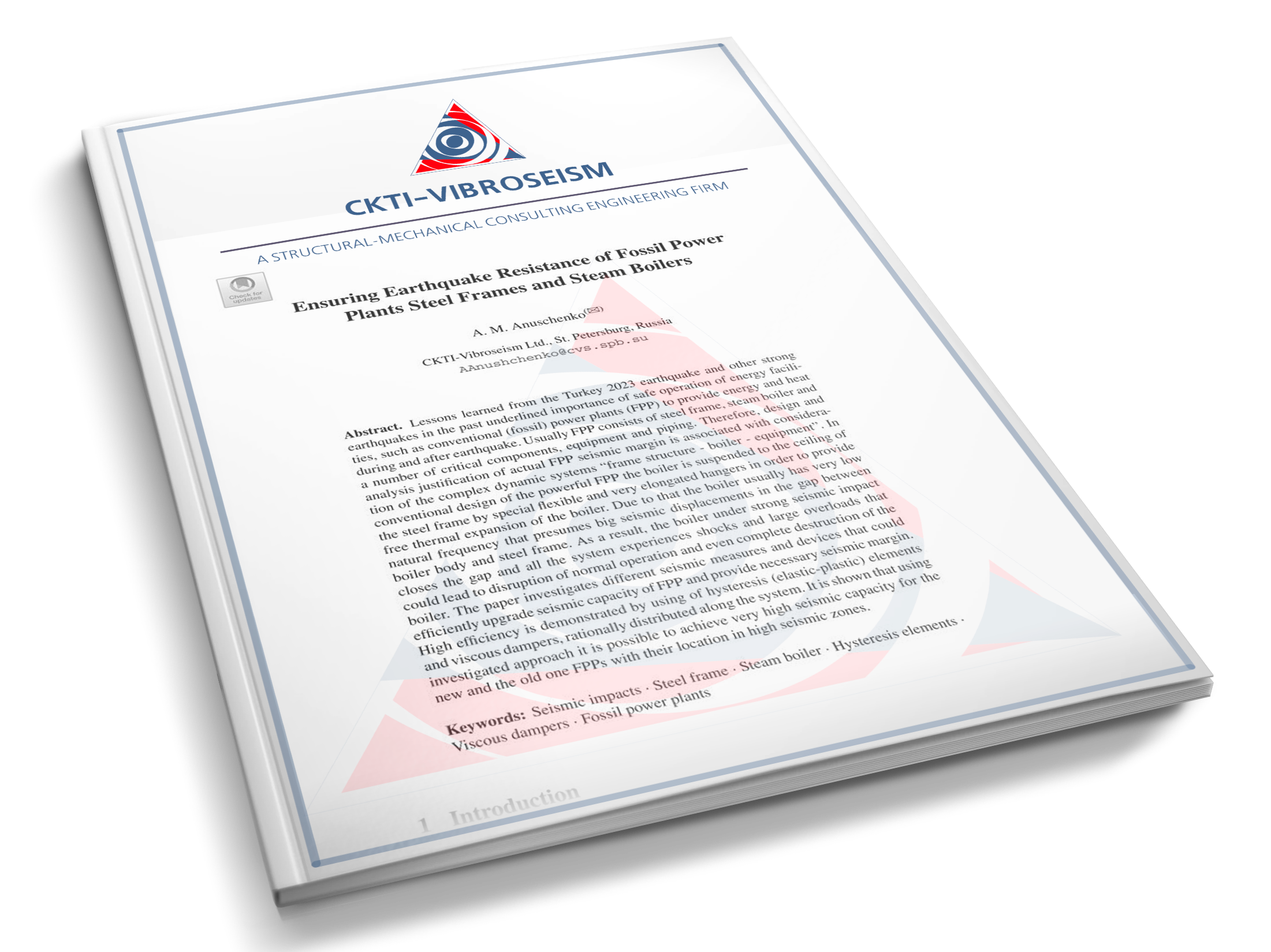Ensuring Earthquake Resistance of Fossil Power Plants Steel Frames and Steam Boilers
18th World Conference on Seismic Isolation

- Author: Анущенко А. М. [Aleksandr M. Anushchenko]
- Publisher: English
- Pages: 18
- ISBN: 978-3-031-66888-3
- N°: 57
- Library: Conference Papers
- Year: 2024
- File: 18WCSI_Anuschenko
Hits: 1558
Abstract. Lessons learned from the Turkey 2023 earthquake and other strong earthquakes in the past underlined importance of safe operation of energy facilities, such as conventional (fossil) power plants (FPP) to provide energy and heat during and after earthquake. Usually FPP consists of steel frame, steam boiler and a number of critical components, equipment and piping. Therefore, design and analysis justification of actual FPP seismic margin is associated with consideration of the complex dynamic systems “frame structure - boiler - equipment”. In conventional design of the powerful FPP the boiler is suspended to the ceiling of the steel frame by special flexible and very elongated hangers in order to provide free thermal expansion of the boiler. Due to that the boiler usually has very low natural frequency that presumes big seismic displacements in the gap between boiler body and steel frame. As a result, the boiler under strong seismic impact closes the gap and all the system experiences shocks and large overloads that could lead to disruption of normal operation and even complete destruction of the boiler. The paper investigates different seismic measures and devices that could efficiently upgrade seismic capacity of FPP and provide necessary seismic margin.
High efficiency is demonstrated by using of hysteresis (elastic-plastic) elements and viscous dampers, rationally distributed along the system. It is shown that using investigated approach it is possible to achieve very high seismic capacity for the new and the old one FPPs with their location in high seismic zones.
 CKTI-Vibroseism Ltd.
CKTI-Vibroseism Ltd. 
